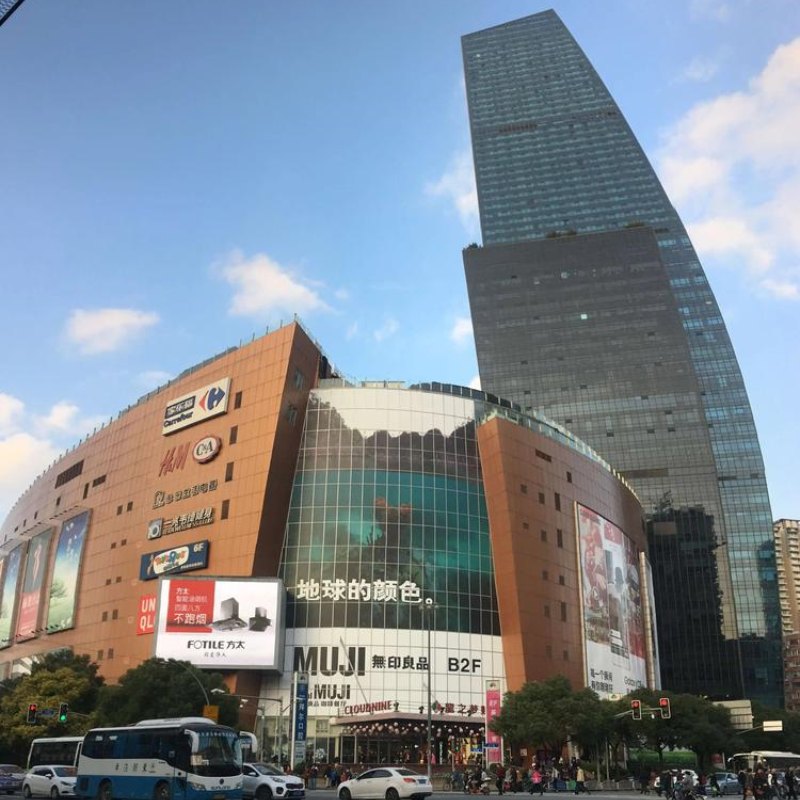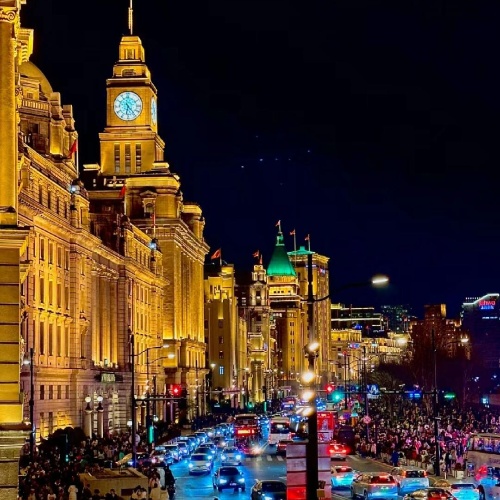Shanghai is one of the fastest-growing cities in the world, and it seamlessly blends the old with the new. Revered as ‘The Pearl of the Orient’, this destination offers a spectacular amalgamation of rich ancient history, modern skyscrapers, delicious culinary offerings, and an electrifying vibe. With century-old temples and striking skylines on the banks of the Huangpu River, Shanghai zests up the lives of history buffs, food lovers, and tourists alike. In this travel guide, we have covered all major landmarks and hidden spots that will make your visit to Shanghai truly memorable. Get ready to explore the exuberant side of the city!
What are the Must-See Shanghai Attractions?

Exploring the Bund and Its Iconic Skyline
The Bund, also referred to as Waitan, is one of Shanghai’s most famous landmarks, and the Bund is home to Shanghai’s iconic waterfront stretching along the Huangpu River, featuring a rich blend of historic architecture. The centuries-old structures on The Bund's right side, i.e., the Gothic, Baroque, and Neoclassical colonial era buildings, serve as the "Museum of International Architecture". Therefore, it is unsurprising that Shanghai blends historical and modern cities. With the newly constructed Lujiazui boasting the Shanghai Tower and Sutuo Oriental Pearl Tower, Shanghai aims to dazzle onlookers.
With everything mentioned above, a casual evening stroll next to the Huangpu River becomes memorable as guests are treated to breathtaking views of Shanghai's skyline. Guests not only have the option to stroll freely, but a river cruise perched at The Bund invites guests to enjoy the glittering view of the towers alongside the ocean front buzz. It is impossible for anyone not to be amazed by the street performances, the locals, and the tourists that populate the grounds, serving as a jewel for the city. Sooner or later, these tourists realize that The Bund is much more than a sightseeing area. The Bang is a mixture of Shanghai’s history and modernization.
Delve into the Historic French Concession
The iconic district in Shanghai, the French Concession, was established in 1849, which means it still has colonial traces. The area was set aside for the French residents, allowing them to construct homes; today, the French Concession still bears proof of the life of the past. Now, it is highly recognized for its European-style mansions, cafes, various boutiques, galleries, and lively streets. The fantastic buildings, like the shikumen houses alongside art deco constructions, are still vivid in the rich culture.
The French Concession is authentic in style and has some historically essential values. It served as a central revolutionary part for the activities until the gem of the French Concession was visible. Riding a bike or walking through the French Concession allows people to visit Fuxing Park, where they can see tai chi and mahjong, or visit Tianzifang and enjoy the vibrant side of the arts. The district is an outstanding example of how the French properly knew how to preserve remarkable landmarks while modernizing the city.
Why Visit the Tranquil Yu Garden?
Yu Garden, situated right in the middle of Shanghai's Old City, is a place that transports you to the peaceful nature of classical Chinese gardens, while simultaneously providing rich history to Shanghai‘s cultural heritage. Originally constructed during the Ming Dynasty in the mid-16th century, this garden, which exceeds five acres, is an exemplary model of classical Chinese garden design. Encapsulated by enchanting walls, visitors can marvel at intricately designed pavilions, koi ponds, and picturesque rockeries with winding bridges crossing them. The gardens are filled with carved lattice windows and expertly curved rooftops, which capture nature’s beauty.
Strolling through Yu Garden offers a gentle escape from the hustle and bustle of city life— the soft flowing water, the bright plants, and the well-placed stone paths surround you in tranquility. This historic site also houses the iconic Exquisite Jade Rock. This remarkable piece of limestone is famous for its one-of-a-kind perforations that supposedly allow smoke or water to pass through delicately. No place in Shanghai captures its heritage better than Yu Garden, which has intricate details for those interested in architecture and nature or simply looking for a tranquil retreat.
Essential Travel Tips for a Smooth Shanghai Experience
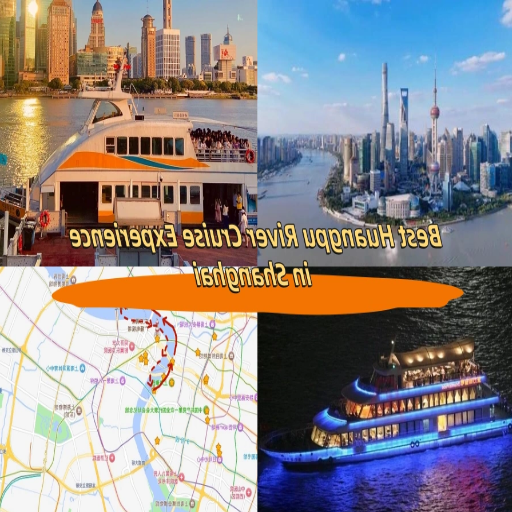
Understanding Shanghai Public Transport
In terms of ease and the scale at which it can be utilized, Shanghai has one of the best public transport systems in the world, which in turn means that tourists have an easier time navigating through the city. The city's Shanghai Metro serves as the primary transport artery, containing 19 lines and over 500 stations that span the city’s important landmarks, metropolitan areas, residential hubs, and workplaces. Subways run daily from around 5:30 AM to 11 PM, with peak hours operating intervals of 2-4 minutes. If you don’t understand Mandarin, announcements and signs are also in English.
As for ground transport, Shanghai possesses an extensive bus network. With over 1,000 bus routes, there are services to places not serviced by the subway. Riders can also pay for metro and bus services with the Shanghai Public Transport Card, an easier-to-use prepaid card, so no change is needed. Beyond public transport, taxis and ridesharing services such as Didi are available but are advisable for people with longer distances to cover or when public transport isn’t available.
Using the ferry to connect the Bund and Pudong Area is quite a spectacular scene and helps preserve the environment. The ferry system also helps in crossing the Huangpu River. Depending on the types of transportation one is familiar with, one can find a mode that fits their needs and preferences in public transport. Public transportation within Shanghai is metered, allowing locals and tourists to utilize the services seamlessly and without hiccups.
How to Navigate Nanjing Road and Other Shopping Areas
Nanjing Road is the most popular shopping venue in Shanghai and is well-known for its elegant combination of modern and traditional charm; it has something for everyone. This energetic street is divided into two sections: Nanjing Road East and Nanjing Road West, extending over three miles. Northeastern Nanjing Road is pedestrian-friendly and filled with a lively atmosphere. It has an entire stretch of local Boutiques, flagship stores, and well-known international brands. On the other hand, Nanjing Road West houses luxurious malls like the Shanghai Center and Plaza 66, which offer a tailored shopping experience complete with exquisite dining and designer outlets.
For a smoother shopping experience, consider timing your visit during weekdays or earlier in the day to avoid peak hours. Besides, shopping areas are well connected to metros and buses in Shanghai. For Nanjing Road East, People’s Square Station (Lines 1, 2, and 8) and East Nanjing Road Station (Lines 2 and 10) are some of the best stations to disembark as they are very close to significant points of interest. Those looking for a more casual atmosphere can stroll to other areas like Huaihai Road, where they will find little shops and trendy cafes. Whether visiting to look for good bargains or to taste delicious local street foods, you are guaranteed to have remarkable memories of shopping in Shanghai.
Street Food Safety: Enjoying Dumplings and More
Steamed soup dumplings (xiaolongbao) and pan-fried buns (shengjianbao) offer locals and tourists a taste of Shanghai’s vibrant culinary culture. Experiencing street food in Shanghai can be exciting and overwhelming, so acquiring a few tips could go a long way in maximizing the fun. Masticating on a particular delicacy is far more enjoyable when the vendor ensures steaming hot food is served, greatly reducing contamination risks. Make it a point to visit stalls with many repeat customers - this enhances a food stall’s chances of freshness and quality guarantee. Vendors who are constantly cooking or steaming their food ensure that it is not only served hot but also safe to eat.
Hygiene and cleanliness are other essential factors that must be emphasized. Order from a vendor with clean work counters, proper food storage facilities, and gloves. Check if the dumplings are thoroughly cooked, especially the dough, which should be firm but tender. The filling, preferably pork or seafood, must also be adequately cooked to eliminate health risks. Nonsanitizing wipes and tissues can also be helpful, especially for people who plan to visit stalls lacking washing stations.
Mind your individual dietary preferences and stick to safe practices, especially if food allergies or a sensitive stomach are a concern. Street food in Shanghai often contains additives such as sesame, peanuts, and shellfish, so knowing about the underlying ingredients can be helpful. Shanghai's unparalleled street food is all about savvy preparation and a discerning eye, which allows you to indulge while relishing the captivating street food flavor safely.
Exploring Shanghai Tours: What to Expect?
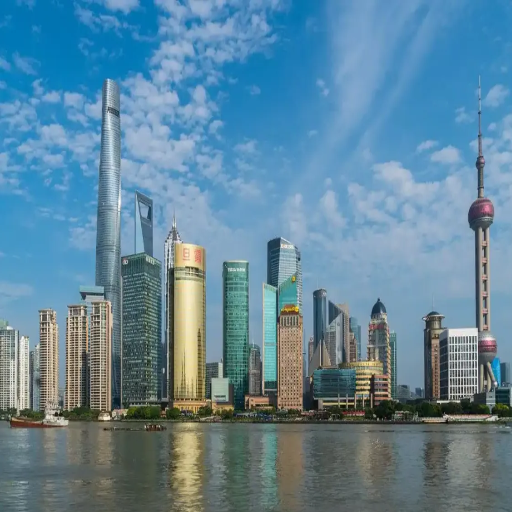
Highlights of a Shanghai City Tour
A Shanghai city tour allows one to fully engage with one of China’s most modern and cultured cities. Most tours start with a trip to the Bund, a famous waterfront road with historical buildings and colonial architecture. It is positioned next to the modern Pudong borderline of Shanghai within the skyscraper district. While here, tourists take walks by the Huangpu River, observing floating vessels and dazzling towers like the Oriental Pearl Tower and the Shanghai Tower.
The Yu gardens are another highlight. This classical Chinese garden was founded in the Ming dynasty and is famous for its serene ponds, rock formation sculptures, and detailed pavilions, which serve as an oasis away from the bustling city. In addition, the Old City God’s Temple area provides an insight into ancient Shanghai life that still exists while at the same time offering amazing and unique street-side snacks and souvenirs.
A visit to the French Concession is a must in every tour of Shanghai. The concession is globally known for its stylish spurred tree roads, Matze-style houses, and fancy eating joints. It equally captures Shanghai's modern and old history. It was repurposed from an industrial area for creative art. M50 Creative Park is ideal for design lovers and offers contemporary installations of Chinese art.
As a delightful end to the day, how about a superb Huangpu River cruise to appreciate the city's majestic skyline? Daytime or nighttime, a city tour in Shanghai seamlessly blends the city's rich history, modern architecture, and deeper cultural aspects, leaving visitors encapsulated by its allure.
Unique Experiences in the Former French Concession
The Former French Concession in Shanghai is a place unlike any other, as it uniquely combines colonial legacy with modern chic hotspots. While walking on the green boulevards, one can still observe European-style mansions and Art Deco structures. One of the great features is Tianzifang, a colorful labyrinth of small passages filled with boutiques, art studios, and cozy restaurants, which is regularly visited by people who wish to gain new insights and dive into culture.
Fuxing Park is another fascinating Chinese area as it serves as a lovely green park where people can be seen practicing Tai Chi, playing chess, or dancing to oldies music. For many, the Former French Concession is the area that has it all; for fans of fine and varied food, there are multiple places to try Shanghainese dishes and also fusion food made in modern styles served in stylish places. This neighborhood showcases the blend of old and contemporary in Shanghai, portraying Shanghai’s rich character and culture to the visitors.
Day Trips Near Shanghai: Suzhou and Beyond
Not far from Shanghai, Suzhou is a peaceful escape and one of the most beautiful places in China. Also referred to as the “Venice of the East,” Suzhou is famous for its stunning canals, classical gardens, and historical architecture. Tourists can visit the exquisite Administrator’s Garden, a UNESCO World Heritage Site. This garden consists of traditional pavilions, calm streams, and beautiful landscapes, further enhancing its charm. The city is also well known for its silk industry, and a trip to the Suzhou Silk Museum showcases silk weaving and its rich cultural heritage.
Further afield, other places are as interesting as Suzhou. With charming natural beauty and cultural richness, Hangzhou is famous for its beautiful West Lake. The calm Longjing (Dragon Well) tea plantations offer tours for those wanting to learn about China’s tea culture. Shaped like a water town, Zhujiajiao is very beautiful and still holds many artifacts of ancient history. With stone bridges across winding rivers, this town truly represents historical dynasties. These trips away from the bustling city of Shanghai give travelers new perspectives and even more beautiful memories.
What are the Best Things to Do in Shanghai?
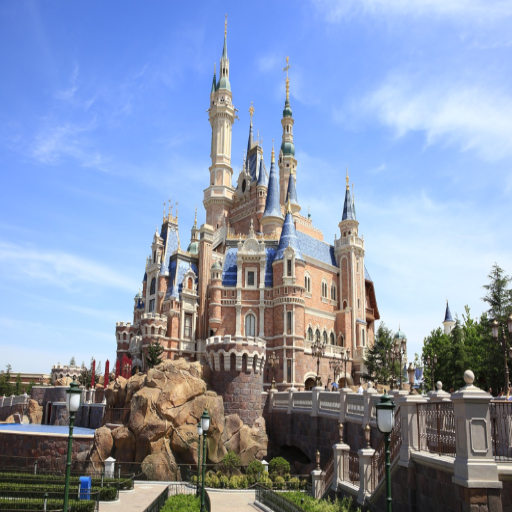
Experiencing Shanghai Nightlife and Entertainment
The lively nightlife of Shanghai has something for everyone, whether modern flair or adding a bit of culture. The Bund, aglow with spectacular lights, is an extravagant beginning to a fabulous night. Exclusive rooftop bars like the one at Three on the Bund serve exquisite signature cocktails while giving jaw-dropping skyline views as the sun sets. Shanghai also has an extensive selection of venues, including JZ Club, located in the French Concession, a jazz club, or contemporary live music spots like MAO Livehouse.
Visitors can also savor a more cultural evening by attending astonishing opera, traditional Chinese folk performances, world-class ballet, and visiting the Shanghai Grand Theatre. In addition, the vibrant city night markets can also serve food lovers, like the Shouning Road Night Market, which offers mouth-watering and eye-boosting grilled seafood and dumplings. Without a doubt, Shanghai has a sensational side that emerges at night, where, just like the city, the nightlife is equally exhilarating and diverse.
The Cultural Vibe of Tianzifang and Xintiandi
Tianzifang and Xintiandi are well known for blending Shanghai's history with modern lifestyle. They are a cultural heaven for tourists coming to Shanghai. Tianzifang is located in a French suburban region, and it is famous for its small streets and colorful shops. You can easily find different types of jewelry and paintings that Shanghai can savor. Artworks from local artists, like paintings and globes, showcase Shanghai's evolution, which makes it an art utopia. The surrounding Shikumen buildings offer a glimpse into the city's history, showcasing Shanghai’s past. This is a paradise spot for photographers and historians.
Conversely, Xintiandi features the polished version of Tinaizfang, which is famous for its bars and elegant restaurants. Xintiandi is a Shikumen building transformed into a modern dwelling area. Shikumen stores sell clothes and drugs, exuding a global vibe. Those tourists who prefer a modern aspect will find Xintiandi perfect. The plaza area is famous for hosting sponsored live music and cultural shows, which adds even more vibrance to the area. Besides, Tianzifang perfectly captures Shanghai's identity by highlighting how tradition flows with modernization.
Adventures at Shanghai Disneyland
Disney magic meets Chinese innovation at Shanghai Disneyland, which opened its doors in 2016, becoming one of the most visited sites in China and the most modern Disney Park. This said, Disneyland in Shanghai is the world’s most modern Disney Park, located around 30 km away from Shanghai, and it spans over 963 acres, complete with themed lands such as Tomorrowland and the Garden of Imagination.
Walt Disney built the world's second enchantment castle, whose centerpiece is The Disney Castle. It is the world's largest Disney castle, so visiting people can have a Royal walkthrough – an interactive stroll through the castle, making it a visual centerpiece. Bay and form the Enchanted Storybook Castle, sit futuristic TRON Lightcycle Power Run and the first Chinese roller coaster, Pirates of the Caribbean, an adrenaline-flooded experience.
To improve the experience at Shanghai Disneyland, seasonal events, parades, and colorful nighttime shows like “ILLUMINATE! a Nighttime Celebration” are added with laser light shows, fireworks, and captivating projections to round off in a stunning finale. The park's careful incorporation of local Chinese culture and Disney customs aims to guarantee that visitors have a different adventure everywhere they go in the park. For instance, themed restaurants offer unprecedented dining options like traditional Chinese food and international Disney dishes, ensuring something for everyone.
Shanghai Disneyland’s flagship theme park, with its spectacular atmosphere, innovative attractions, and captivating Shanghai experiences, stands as a testament to Shanghai’s ever-evolving image as a hub of international tourism and entertainment, solidifying its status as an international entertainment capital for families across the globe.
Understanding Shanghai's Historical and Modern Contrasts
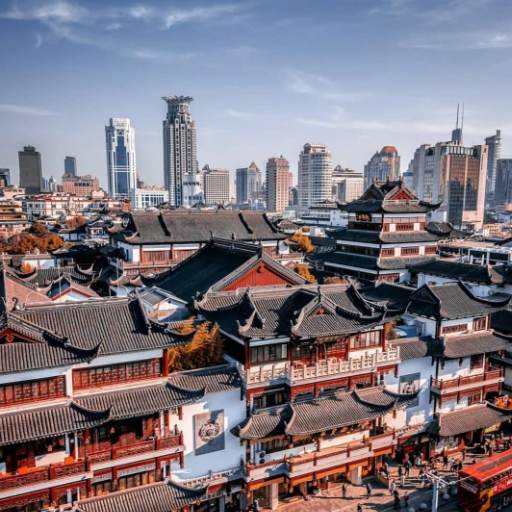
The Evolution of Old Shanghai to a Modern Metropolis
Considering how Shanghai has transformed from a quaint fishing town into a modern metropolis is astonishing. This fusion of ancient and contemporary, which I have personally experienced, epitomizes Shanghai. The Bund, home to towering colonial structures, reminds me of the city's glory days during the international settlement period. Pavements and streets evoke the spirit of Shanghai as a booming commercial center in the late nineteenth and early twentieth centuries. This charm is also beautifully integrated with the skyline of Pudong, which epitomizes the city's modernization and futurist ambitions.
Like everything else, the city’s development has impacted the infrastructure and opportunities available. Moreover, I have witnessed the emergence of modern innovative city initiatives that obliterate the traditional lilong districts characterized by close-knit communities and aged alleys. Regardless of the advances, pieces of the older Shanghai still exist. The city still boasts traditional markets, ancient temples, and cultural festivals, adding flavor to the city’s indigeneity in rapid transformation. This harmony of development and preservation alters the city’s skyline and enhances its spirit, which is why the city is a wonderful place to live, work, and tour.
It is truly remarkable to consider how Shanghai has managed to maintain its historical charm while spearheading China's development. The tenacity and versatility of its people are shown through this. The city is a cultural and historical landmark, modernized alongside its transportation systems, emerging technological and financial sectors, and many more. To me, this is what makes Shanghai so fascinating, its captivating dynamism.
Art and Creativity at M50 Art District
The visit to the M50 Art District marked an unforgettable adventure. It struck me as the core of creative life in Shanghai. I was amazed the moment I stepped into the area because of the energy and diversity around me. M50 is famous for being a center for contemporary art, and it is located in a group of rehabilitated industrial buildings that contain galleries, studios, and workshops. The essence of the district’s mixing of the old and the new is perfectly illustrated by the new use of old textile factories.
What struck me the most was the wide range of art captured. Every gallery had different interpretations, none conformed to the conventional definition of art. These included abstract striking paintings alongside intricate sculptures and inventive installations. One of the moments that I initially enjoyed was watching the artists at work in their studios. I loved how passionate they were about their work, and so for me, this transformed the visit into an experience that was far more dynamic and alive.
The M50 Art District is equally important as a place for contemplation and inspiration beyond the artwork itself. The streets felt like a gold mine with every corner holding something new—a pop-up exhibit bursting with innovative ideas and a forgotten mural waiting to be discovered. Wandering its streets was like looking for a treasure. For anyone wanting to experience the beat of Shanghai's creative society, M50 acts as a glimpse of how the city is enhancing its stature nationally and internationally. It is a place, which at the same time as having traditional values also offers modern ideas and developments which is why it turns into an attraction site for art enthusiasts and tourists.
Exploring the 1933 Slaughterhouse and Its Art Deco Architecture
Wandering into the 1933 Slaughterhouse was as inviting as stepping into a realm where architectural prowess accompanies history. The artistry, which is Art Deco, cinched my wonder as it possesses design splendor, during my stroll through the various winding atriums and captivating corridors; in the year 1933, this slaughterhouse was built, featuring spiraling ramps, intricate bridges, and the geometric shapes of the era were captured elegantly within. A marvelous impression is created by the interplay of natural light and shadow alongside the industrial staircases and raw concrete walls; alluring grandeur is bestowed upon the slaughterhouse, making the space interesting.
It is breathtaking how the building transformed into a creativity and culture hub from its original use. This historic building features event spaces, retro boutiques, and creative studios. On a stroll through, I was deeply appreciative of the way the 1933 Slaughterhouse conserves the enduring artwork while serving as a modern collaboration and innovation venue. For history enthusiasts and architecture admirers, this is a place waiting for further exploration and reflection.
Frequently Asked Questions (FAQs)
Q: Which places are the most recommended to visit while touring around Shanghai?
A: Don't forget to visit the world's second-tallest building, the Shanghai Tower, and enjoy walking along the Bund, where you can take in the views of the Huangpu River and the impressive skyline of Pudong. Also, try to visit the historic Yuyuan Garden. Don't forget to visit the shopping areas in the Hongkou District and Nanjing Road.
Q: Where can I get the most recommended Soup Dumplings in Shanghai?
A: If you want tasty soup dumplings or xiao long bao, visit the Huangpu District for other renowned shops selling these Shanghainese specialties. Din Tai Fung and Jia Jia Tang Bao are among the shops recommended for enjoying these snacks.
Q: What are the best means of sightseeing around the Huangpu River?
A: Take a river cruise on the Huangpu River to enjoy an alternative route to the city’s skyline and skyscrapers, certainly towards the Lujiazui Skyscraper District. Spending time on the Bund promenade will also surprise you because it provides stunning views, especially when the city is illuminated at night.
Q: Where can I admire traditional Chinese culture in Shanghai
A: To admire traditional Chinese culture, you can visit the City God Temple, which is surrounded by Shikumen architecture and is a must-see for every tourist coming to Shanghai. The Urban Planning Exhibition Center is another place that gives a deeper understanding of Shanghai's development.
Q: What is the most convenient way to travel around Shanghai?
A: Shanghai has a well-developed public transportation system, including buses and passenger trains connecting all important areas of the city. Taxis are also an option and are very commonly used to navigate the city, especially for tourists who do not speak the local language.
Q: Does Shanghai have tourism day trips?
A: You can visit water towns like Tongli and Zhujijiao, which truly depict traditional Chinese life. Additionally, Suzhou is a famous one-day traveling destination from Shanghai for its classical gardens.
Q: What are the most well-known shopping districts in Shanghai?
A: For purchasing items in Shanghai, shoppers can shop till they drop at Nanjing Road, which has countless international and local branded goods. Hengshan Road and around Jing’an are popular areas for boutique shops selling distinct fashion and design products.
Q: Where can I enjoy a promenade walk in Shanghai?
A: The Bund is the most well-known promenade because it provides an unrivalled view of the Huangpu River and Pudong’s skyline. It’s ideal for relaxing and relishing the city's beauty.
Q: What are some practical considerations for visiting Shanghai?
A: Having a translator app installed is a plus for better communication. As Shanghai is quite crowded, it is recommended that days for popular sites be planned around peak periods. Since many small places do not accept cards, one should keep cash.
Q: In which parts of Shanghai can one find the best nightlife?
A: For a more vibrant nightlife, you can visit Lujiazui for high-end clubs and bars or Hengshan Road for other popular spots. There are also modern and old-style bars in Shanghai’s Hongkou District, adding diversity to the experience.
